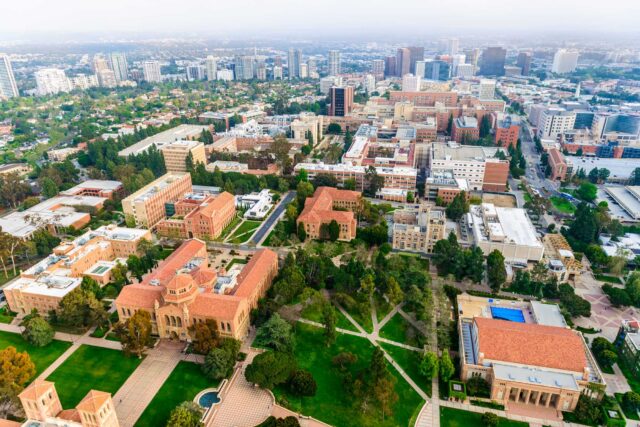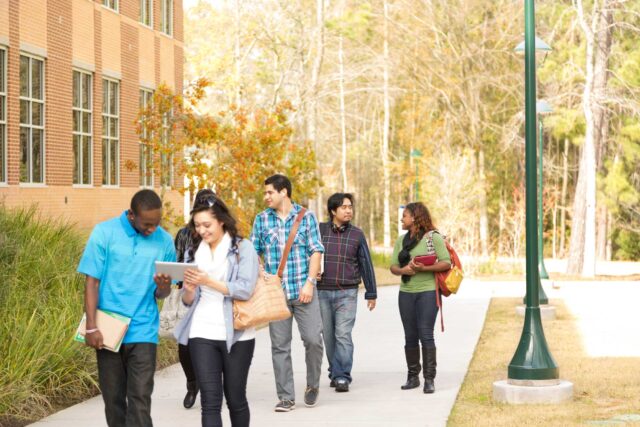This post is part of a series examining how educational opportunities and outcomes differ across California.
California’s community colleges enroll more than 2 million students each year. While most of these students intend to eventually earn a bachelor’s degree, fewer than a third of transfer-intending students transfer to a four-year college after six years. Since community colleges are a key gateway to higher education for low-income, first-generation, Black, and Latino students, improving transfer rates could help ensure that a more diverse group of Californians benefit from the economic gains that accompany a bachelor’s degree. However, there is wide local variation in transfers, meaning that where students live and what community college they attend can affect their likelihood of transferring to a four-year college.
The good news is that transfer students to the University of California (UC) and California State University (CSU) have very high graduation rates, with the vast majority successfully earning a bachelor’s degree. In the last decade, the community colleges along with CSU and UC have made progress in expanding access to transfers. From 2010 to 2019, total transfers to CSU and UC increased by 18% and 28%, respectively. CSU campuses enroll a majority of the state’s community college transfers, about 70,000 each year, compared to 20,000 a year at UC.
In this post, we focus on transfers among community college students who successfully completed at least 12 units (a course-taking pattern that increases the likelihood of transferring) by the end of the 2018–19 academic school year and who exited the community college system. Among these students, about 17 out of every 100 enrolled in either a UC or CSU campus during the following 2019–20 school year, according to data from Cal-PASS Plus. (Importantly, this is not the same as a transfer rate; instead, it represents the share of exiting students who transfer the following year, and is useful for making cross-college comparisons).
The interactive below shows the large variation in transfers across community college districts and campuses. Encouragingly, we see districts with relatively high transfer shares in most regions of the state, except for the Far North and Eastern Sierra. Districts with high transfer shares in the Central Valley and Inland Empire are particularly notable, since these inland regions tend to have lower levels of educational opportunity compared to populous coastal areas. Across colleges, shares range from as high as 25 per 100 students at De Anza, Pasadena City, and Irvine Valley colleges, to less than 5 per 100 at Lassen, Compton, and Feather River. Wide disparities also exist between neighboring colleges. Within the Los Angeles Community College District, for example, transfer numbers range from 20 per 100 at LA Pierce to less than 7 per 100 at West LA and LA Trade-Tech (which is focused on vocational education).
Transfers to CSU campuses are relatively high across most California regions. In contrast, transfers to UC are heavily concentrated in the Bay Area and along the southern coast—where most UC campuses are located and where high school graduates are more likely to have completed a college preparatory curriculum. UC Merced, UC Riverside, and UC Davis are the only non-coastal UC campuses, perhaps limiting UC access for community college students in inland areas. (However, community college districts surrounding Merced, Riverside, and Davis do not have relatively high UC transfer rates.)
Transfers also vary widely by race and ethnicity. Statewide, transfers ranged from 11 per 100 for Black students, 15 per 100 for white students, 16 per 100 for Latino students, and 20 per 100 for Asian students (including Pacific Islanders and Filipinos). Once again, disparities are larger for UC transfers. Among Asian students who transferred to one of these in-state public institutions, 36% transferred to a UC, compared to 26% among Black and white students, and 15% among Latino students.
In recent years, statewide reforms like AB 705 have made it possible for more students to successfully complete transfer-level math and English courses in their first year. Collaborations between the community college system and the state’s public universities have also led to the creation of the Associate Degree for Transfer (ADT) and the Transfer Admission Guarantee (TAG), which have expanded transfer opportunities for many students.
But more work is needed to close persistent regional and racial disparities. Given the dramatic local variation, college-level efforts, including effective academic advising and support services, are essential. Finally, private colleges are also an important destination for many community college transfers. Though current data is limited, California’s new cradle-to-career data system will allow for a better understanding of transfer patterns to private colleges. To fulfill higher education’s promise as a pathway to economic mobility for all residents, the state and colleges must continue to focus on increasing community college transfers.
Topics
Access California Community Colleges California State University Completion enrollment Equity geography of educational opportunities Higher Education Population racial disparities transfer University of CaliforniaLearn More

Geography of College Aid in California

Geography of College Enrollment in California

Geography of Educational Attainment in California

Improving Regional Representation among Community College Transfers

Increasing Community College Transfers: Progress and Barriers





